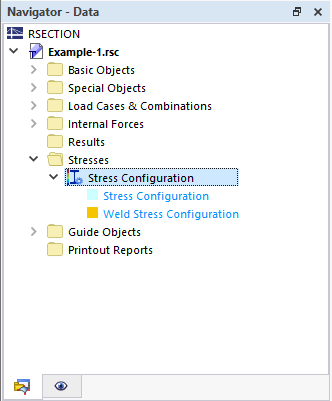In the stress configuration, you specify which general stresses are to be calculated and output. There is a separate weld stress configuration for weld stresses, where you can specify the calculation and output of these weld stresses.
You can open the configurations in the Navigator – Data via the Stresses entry.
